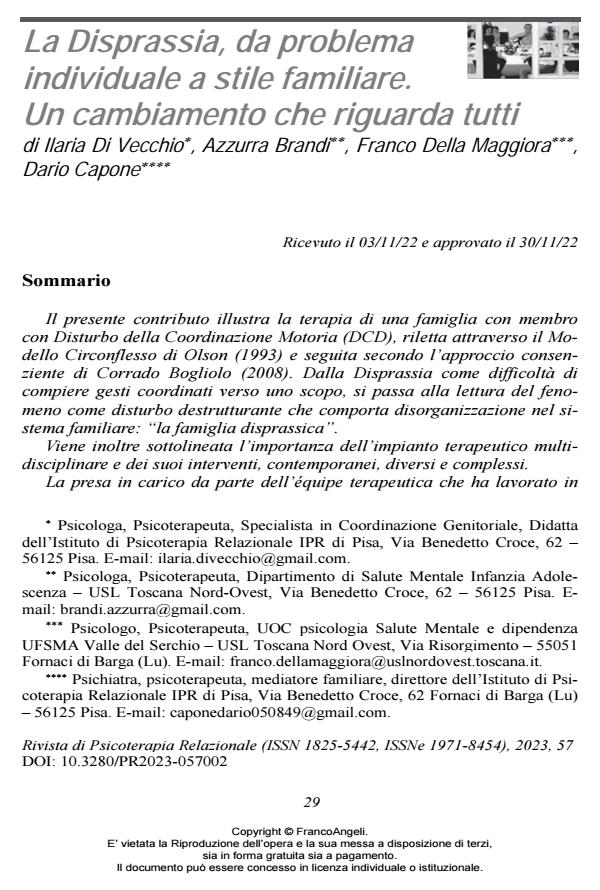Dyspraxia from individual to family style problem. A change that affect everyone
Journal title RIVISTA DI PSICOTERAPIA RELAZIONALE
Author/s Ilaria Di Vecchio, Azzurra Brandi, Franco Della Maggiora
Publishing Year 2023 Issue 2023/57
Language Italian Pages 16 P. 29-44 File size 196 KB
DOI 10.3280/PR2023-057002
DOI is like a bar code for intellectual property: to have more infomation
click here
Below, you can see the article first page
If you want to buy this article in PDF format, you can do it, following the instructions to buy download credits

FrancoAngeli is member of Publishers International Linking Association, Inc (PILA), a not-for-profit association which run the CrossRef service enabling links to and from online scholarly content.
The present work describes the therapy of a family that has a mem-ber with Developmental Coordination Disorder (DCD), reinterpreted through the Olson Circumflex Model (1993) and followed according to the “consenziente” approach of Corrado Bogliolo (2008). In this regard, dyspraxia goes beyond the difficulties of the individ-ual, in terms of coordination and movement, becoming a destabilizing phenomenon in which the disorder negatively affects the organization of the family system: a “dyspraxic family”. In addition, the importance of the multidisciplinary therapeutic framework is also highlighted, in-cluding its diverse and complex interventions, which are applied in a contemporaneous manner. The therapeutic team’s treatment, based on a shared goal and style, seems to have fulfilled the family system needs, restoring balance and structure within the system, as well as between the system and its envi-ronment.
Keywords: dyspraxia, adolescence, rigid system, “consenzienza”, dy-spraxic family, multidisciplinary.
Ilaria Di Vecchio, Azzurra Brandi, Franco Della Maggiora, La Disprassia, da problema individuale a stile familiare. Un cambiamento che riguarda tutti in "RIVISTA DI PSICOTERAPIA RELAZIONALE " 57/2023, pp 29-44, DOI: 10.3280/PR2023-057002